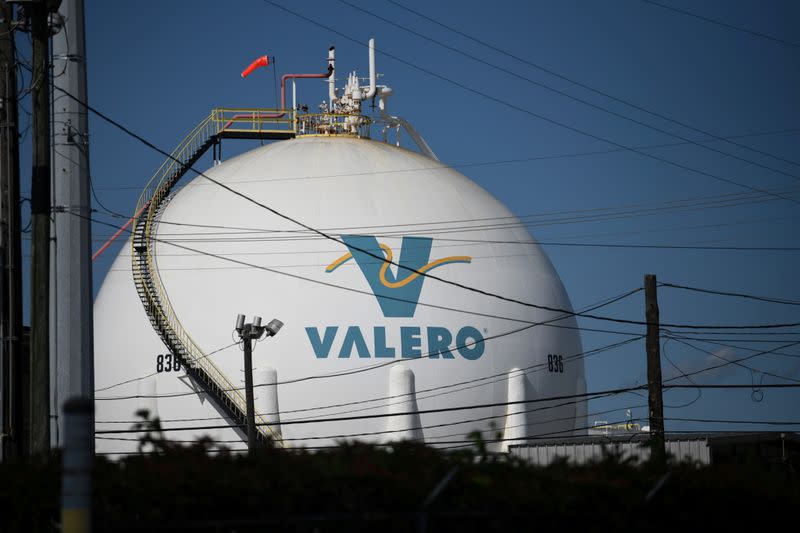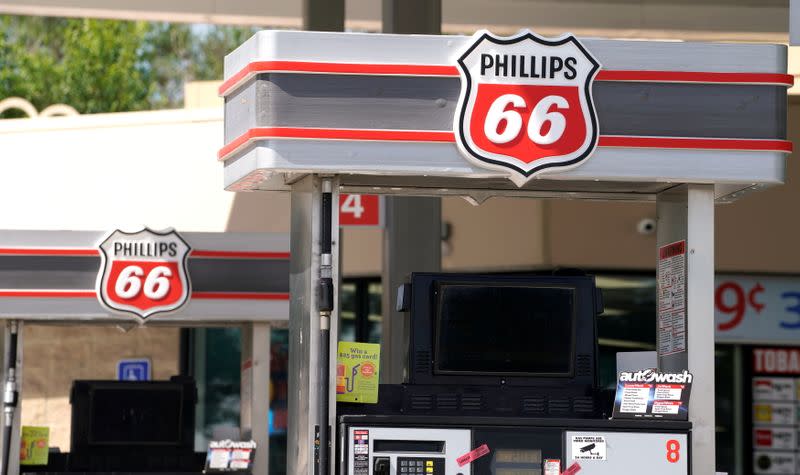February freeze to hit refiners' earnings as investors look to demand
By Laura Sanicola
(Reuters) - Refiners are expected to report big first-quarter losses after February's winter storm froze activity along the Gulf Coast, but as more Americans are vaccinated against COVID-19, analysts expect the industry's outlook to brighten as demand rebounds.
Seven independent U.S. refiners are projected to post an average earnings-per-share loss of $1.32, versus a loss of $1.77 in the fourth quarter of 2020, according to IBES data from Refinitiv.
The culprit? February's severe storm that knocked out power for millions and took numerous refiners offline for weeks.
However, analysts will be listening to the companies' forward outlooks, expecting demand to rebound as most U.S. states rapidly rolled out vaccination programs in the quarter. U.S. fuel demand has rebounded in recent weeks, with overall interstate miles traveled in the last week of March just 2% below 2019 levels, the U.S. Department of Transportation said.
By the end of the quarter on March 31, more than 30% of the U.S. population had received at least one shot of the vaccine, according to the U.S. Centers for Disease Control.
"[The] U.S. is leading the world in vaccine distribution and that implies faster recovery in product demand as all restrictions are lifted and economic activity fully resumes," Credit Suisse analyst Manav Gupta said in a note.
U.S. refinery utilization has rebounded from the storm to near 2019 levels of 85%, and U.S. refining margins continued to improve to around $20 per barrel at the end of the quarter.
The five-day cold spell in mid-February knocked out a third of the nation's oil refining capacity, shutting individual units and sometimes entire plants at 25 refineries in Texas, New Mexico, Oklahoma, Louisiana and Tennessee, while simultaneously raising electricity and natural gas costs for refiners.
Valero Energy, which reports earnings on Thursday, estimated earlier this month that the storm would reduce its refining operating income by approximately $530 million. Phillips 66 projected an adjusted net loss of $550 million to $700 million in the quarter, triple its original IBES loss estimates.
While road travel has picked up, jet fuel demand remains 25% below pre-pandemic levels. As a result, refiners are struggling to increase production without creating a glut of distillate inventories that would hurt margins of diesel and kerosene.
"Most of the focus is on whether refineries are going to express confidence that margins will remain supported" and will allow them to raise processing rates, said Jason Gabelman, director of energy equity research at Cowen and Co.
Refiners are expected to address how they are dealing with the rising cost of Renewable Identification Numbers, the credits used for compliance with U.S. biofuels blending laws.
U.S. renewable fuel credits prices reached a three-year high in January and have risen another 20% since then. Several refiners are in the midst of retrofitting refineries for renewable diesel projects to try to offset those costs.
"Even with the RINs headwind, margins are still looking better for refiners as demand for fuel picks up," said Matthew Blair, energy analyst at Tudor, Pickering, Holt and Co.
(Reporting by Laura Sanicola; Editing by Dan Grebler)


